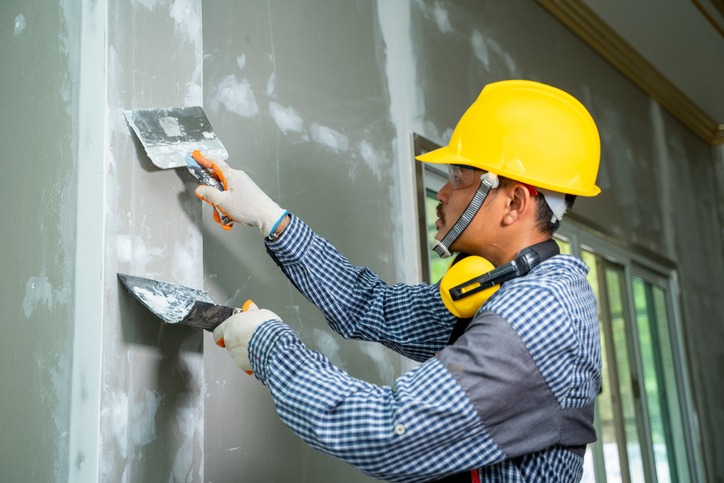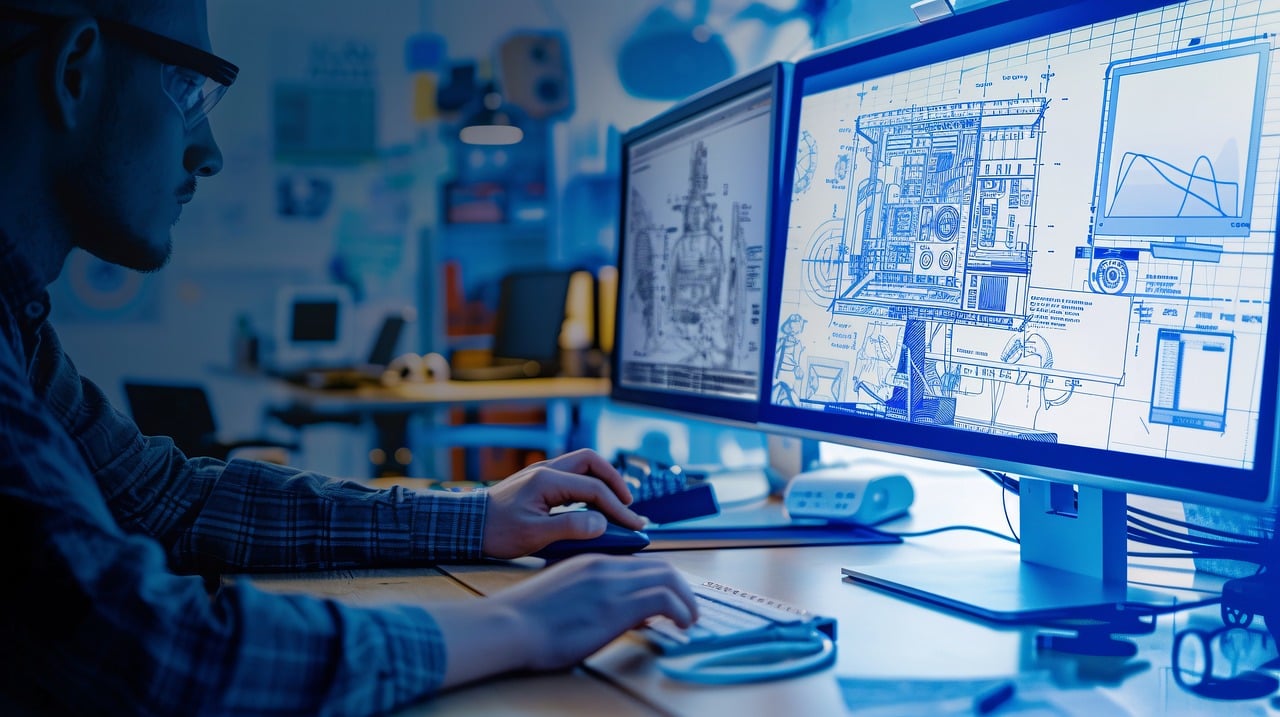As they say, necessity is the mother of invention, and this holds true for the advent of drywall in modern architecture. You’ve likely noticed its presence in nearly every building you enter, but have you ever considered how it’s reshaped the way interiors are designed and constructed? With its versatility in textures and colors, drywall has moved beyond its utilitarian roots to become a key player in aesthetic and sustainable design. But the story doesn’t end there. Its evolution continues to influence construction efficiency and the incorporation of technology in ways that might surprise you. Let’s explore what lies behind those walls and under that paint.
Evolution of Drywall Usage
Drywall has revolutionized modern architecture, evolving beyond simple panels to embrace unique textures, shapes, and colors that enhance interior spaces. You’ve likely noticed how it’s not just about flat, white walls anymore. The innovation in drywall usage, integrating curved and organic forms, brings a new dimension to building design. This evolution reflects the industry’s shift towards more visually engaging and dynamic wall systems, which not only contribute to the aesthetic appeal of a space but also its functionality.
Additionally, the push towards sustainability has notably influenced drywall’s development. You’re now seeing materials that have a reduced environmental impact, marking a shift in how buildings are not just designed but also constructed. This aspect of drywall usage underscores the industry’s commitment to minimizing the ecological footprint of construction activities. As you explore modern spaces, it’s evident that drywall is at the forefront of sustainable building practices, offering solutions that marry aesthetic desires with environmental responsibility. Through these innovations, drywall has become a key player in shaping the future of wall systems, transforming how architects and builders approach the creation of interior spaces.
Aesthetic Transformations
Frequently, architects turn to drywall for its ability to create visually enchanting spaces, transforming plain interiors into works of art. The material’s adaptability isn’t just about thermal insulation and fire resistance; it’s also a canvas for aesthetic innovation. Imagine walking into a room where every element, from walls to ceilings, tells a story of modern design and functionality. Here’s how drywall is making that possible:
- Textured Finishes: Adding depth and intrigue, textured finishes on drywall surfaces introduce a tactile dimension that’s visually mesmerizing.
- Vibrant Colors: The use of bold, striking colors for accent walls creates focal points that command attention and make lasting impressions.
- Curved Shapes: The introduction of curved and organic forms breaks the monotony of straight lines, adding sophistication and a touch of elegance.
- Innovative Lighting Integration: Drywall designs incorporating subtle lighting add an ambient glow, enhancing the mood and atmosphere of any space.
These elements, combined with the inherent benefits of drywall such as thermal insulation and fire resistance, underscore how drywall has not just adapted to contemporary needs but has also spearheaded aesthetic transformations in modern architecture.
Technological Advancements
In recent years, technological innovations have greatly elevated drywall’s functionality and efficiency in modern construction. You’ve seen the advent of soundproofing solutions that additionally improve acoustic performance, creating quieter, more serene living and working environments. Moreover, fire-resistant properties have been integrated, enhancing safety and providing peace of mind.
Smart technologies embedded within drywall systems have revolutionized how spaces interact with their inhabitants. Sensors and wiring seamlessly integrate, offering unprecedented connectivity and functionality. This leap in technology not only enhances the user experience but also streamlines the construction process.
Here’s a quick look at the advancements:
| Innovation | Impact |
|---|---|
| Soundproofing Solutions | Enhances acoustic performance in buildings |
| Fire-Resistant Properties | Improves safety standards in construction |
| Smart Technologies Integration | Enhances functionality and connectivity within spaces |
| Improved Thermal Insulation | Contributes to energy efficiency in buildings |
Digital modeling and CAD software have also played pivotal roles, optimizing drywall installation for more precise and efficient outcomes. These technological advancements are not just about improving the material itself but also about how drywall contributes to smarter, safer, and more sustainable living and working spaces.
Sustainability and Drywall
You’ll find that embracing drywall technologies not only speeds up construction but also greatly bolsters sustainability efforts. By integrating drywall into your projects, you’re committing to more than just aesthetic and functional benefits; you’re also making a significant leap towards eco-friendliness and energy efficiency. Here’s how:
- Quicker Installation: Drywall’s ease of installation means less time spent on the construction site. This reduction in labor and structural costs is a win for both your budget and the environment.
- Decreased Energy Consumption: Thanks to its insulating properties, drywall contributes to maintaining indoor temperatures, leading to lower energy bills and reduced emissions.
- Cost-Effective for Reconstruction: In areas hit by natural disasters, drywall serves as an affordable solution for rebuilding homes, promoting sustainable urban development without straining resources.
- Supports Sustainable Building Design: Utilizing drywall aligns with the principles of sustainable building design. Its role in enhancing energy efficiency and the use of eco-friendly materials like drywall showcases its importance in today’s green building strategies.
Impact on Construction Efficiency
Drywall technologies revolutionize construction efficiency by slashing installation times and reducing labor and structural costs. You’ll find that the shift towards using drywall not only speeds up the building process but also lowers the overall expenditure involved in creating structures. This method has proven to be a game-changer, especially when you’re looking to cut down on time without compromising on quality.
In addition, drywall’s role in promoting sustainable building practices can’t be overstated. Its ability to reduce energy consumption during the construction phase makes it a cornerstone for eco-friendly projects. You’re not just saving money; you’re also contributing to a healthier planet by minimizing your carbon footprint through efficient resource use.
When disaster strikes, the cost-effectiveness of drywall becomes even more apparent. It offers a durable yet quick solution for rebuilding efforts, enabling communities to recover faster. This aspect is vital in times of need, providing secure housing options without the long wait.
Research underscores drywall’s positive impact on sustainable urban development. Its use aligns with the goals of resource conservation, highlighting its significance beyond just construction efficiency. Through comparative cost assessments, it’s clear that drywall stands out as a cost-effective choice, championing environmental sustainability and efficiency in the construction sector.
Future Trends in Drywall Design
Moving forward, let’s explore the exciting future trends in drywall design that are set to redefine interior spaces. These trends not only aim to enhance the aesthetic appeal of rooms but also promise to incorporate sustainable practices, ensuring that beauty doesn’t come at the expense of our planet. Here’s what you can expect:
- Innovative Textures and Patterns: Imagine walls that aren’t just barriers but canvases showcasing advanced textures and patterns. These visually striking elements will turn mundane walls into focal points of artistic expression.
- Sustainable Practices: You’ll see a stronger emphasis on eco-friendly options, with drywall materials being made from recycled content. This shift underscores a commitment to minimizing environmental impact while maintaining high-quality design standards.
- Curved and Organic Shapes: Say goodbye to the era of flat, uninspiring surfaces. The future holds a fascination with curved and organic shapes, introducing a fluid dynamism to room layouts that challenge traditional boundaries.
- Advanced Lighting Integration: Lighting won’t just complement a room; it’ll become an integral part of the wall design. Innovative integration techniques will enable lighting to enhance ambiance, creating atmospheres that shift with your creativity and sustainability.
These trends promise to transform how we perceive and interact with the spaces around us, making every room a showcase of creativity and sustainability.
Conclusion
To sum up, you’ve seen how drywall has reshaped modern architecture, from enhancing your interior design with textured finishes and bold colors to revolutionizing building practices with its sustainable options. Its evolution, aesthetic transformations, and technological advancements have greatly boosted construction efficiency. As you look ahead, expect drywall design to continue evolving with trends like organic shapes and integrated lighting, further emphasizing its pivotal role in shaping the future of architecture and design in your spaces.





